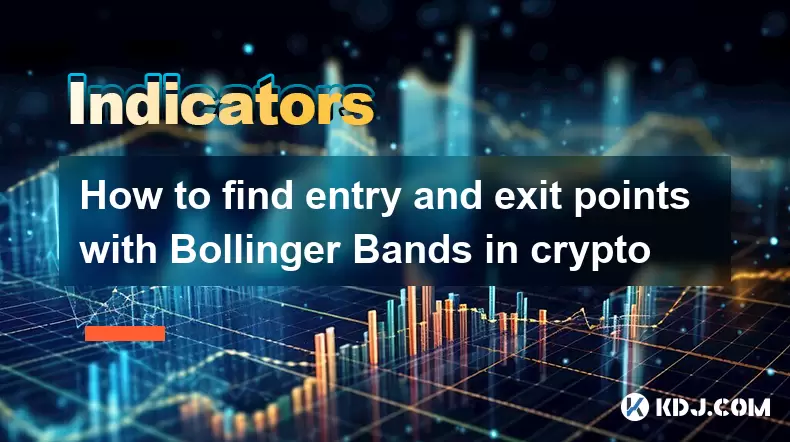-
 Bitcoin
Bitcoin $120400
1.77% -
 Ethereum
Ethereum $3615
7.90% -
 XRP
XRP $3.580
17.84% -
 Tether USDt
Tether USDt $1.001
0.06% -
 BNB
BNB $729.4
1.25% -
 Solana
Solana $179.9
5.04% -
 USDC
USDC $0.0000
0.01% -
 Dogecoin
Dogecoin $0.2311
8.22% -
 TRON
TRON $0.3226
4.04% -
 Cardano
Cardano $0.8490
12.85% -
 Hyperliquid
Hyperliquid $46.45
0.72% -
 Stellar
Stellar $0.4913
8.54% -
 Sui
Sui $4.027
2.00% -
 Chainlink
Chainlink $18.51
11.67% -
 Hedera
Hedera $0.2818
21.51% -
 Avalanche
Avalanche $24.03
7.40% -
 Bitcoin Cash
Bitcoin Cash $508.5
2.90% -
 Shiba Inu
Shiba Inu $0.00001496
3.24% -
 UNUS SED LEO
UNUS SED LEO $8.961
1.83% -
 Toncoin
Toncoin $3.264
3.13% -
 Litecoin
Litecoin $104.6
8.15% -
 Polkadot
Polkadot $4.389
6.11% -
 Uniswap
Uniswap $9.924
10.63% -
 Monero
Monero $337.9
0.49% -
 Pepe
Pepe $0.00001376
2.79% -
 Bitget Token
Bitget Token $4.830
2.46% -
 Ethena USDe
Ethena USDe $1.001
0.05% -
 Dai
Dai $1.000
0.02% -
 Aave
Aave $325.2
1.66% -
 Bittensor
Bittensor $423.7
-0.85%
How to find entry and exit points with Bollinger Bands in crypto
Bollinger Bands help crypto traders identify overbought/oversold levels, breakouts, and exit points by using volatility-based bands around a moving average.
Jul 18, 2025 at 06:22 pm

Understanding Bollinger Bands in Cryptocurrency Trading
Bollinger Bands are one of the most widely used technical indicators in trading, especially in the highly volatile cryptocurrency market. Developed by John Bollinger in the 1980s, this tool consists of three lines: a simple moving average (SMA) in the middle, and two outer bands that represent standard deviations above and below the SMA. These bands dynamically adjust to price volatility, expanding during periods of high volatility and contracting when the market is calm.
In crypto trading, where prices can swing dramatically within short timeframes, Bollinger Bands help traders identify overbought or oversold conditions, potential reversal points, and breakout opportunities. Understanding how these bands interact with price action is crucial for determining optimal entry and exit levels.
Identifying Overbought and Oversold Levels
One of the primary uses of Bollinger Bands in crypto trading is to spot overbought and oversold levels. When the price touches or moves beyond the upper band, it may indicate that the asset is overbought and due for a pullback. Conversely, when the price reaches or falls below the lower band, it could signal an oversold condition, suggesting a potential bounce.
However, traders should not rely solely on this strategy without confirmation from other indicators. In strong trending markets, prices can remain at the bands for extended periods. For example, during a bullish trend, the price might consistently touch the upper band without reversing immediately. To enhance accuracy, combine Bollinger Bands with tools like Relative Strength Index (RSI) or MACD to confirm whether the momentum supports a reversal.
Spotting Breakouts Using Bollinger Band Squeeze
A key feature of Bollinger Bands is their ability to predict breakouts through what’s known as the Bollinger Band Squeeze. This occurs when the bands narrow significantly, indicating decreasing volatility. A squeeze suggests that a sharp price move is imminent, though the direction isn’t specified.
To use this effectively:
- Monitor when the distance between the upper and lower bands becomes very small.
- Wait for the price to break out either above the upper band or below the lower band.
- Enter a trade in the direction of the breakout after confirming with volume or candlestick patterns.
This technique works particularly well in range-bound markets or before major news events that tend to cause sudden volatility spikes in cryptocurrencies.
Using Bollinger Bands with Price Action Patterns
Combining Bollinger Bands with price action strategies can provide more precise entry and exit signals. For instance, if the price hits the lower band and forms a bullish engulfing pattern, it could be a strong buy signal. Similarly, a shooting star or evening star near the upper band might indicate a bearish reversal.
Traders should look for:
- Reversal candlestick patterns near the bands
- Pin bars or inside bars that suggest a shift in momentum
- Confluence with support/resistance levels
By integrating these elements, traders increase the probability of successful trades while managing risk more effectively.
Determining Exit Points with Bollinger Bands
Knowing when to exit a trade is just as important as knowing when to enter. Bollinger Bands can serve as dynamic profit-taking zones. For long positions, consider exiting when the price approaches the upper band, especially if accompanied by bearish divergence or weakening volume. For short trades, target the lower band as a potential exit level.
Some traders also use a trailing stop based on the middle SMA line to lock in profits as the trend continues. It's essential to assess whether the current trend has enough momentum to push further or if exhaustion signs appear. Again, using additional tools like moving averages or volume indicators can improve decision-making around exits.
Frequently Asked Questions (FAQs)
Q: Can Bollinger Bands be adjusted for different crypto assets?
Yes, the default settings (20-period SMA and 2 standard deviations) work well across many cryptocurrencies, but traders often tweak the parameters based on the asset’s volatility. For highly volatile coins like altcoins, increasing the deviation to 2.5 or 3 may reduce false signals.
Q: Do Bollinger Bands work better on certain timeframes in crypto trading?
They are effective across all timeframes, but higher timeframes like 4-hour or daily charts tend to give more reliable signals due to reduced noise. Shorter timeframes like 5-minute or 15-minute charts may offer more entries but come with increased risk of whipsaws.
Q: Should I always wait for price to touch the bands before entering a trade?
Not necessarily. Sometimes the price reverses before reaching the bands, especially in fast-moving markets. Observing rejection candles or momentum shifts before the touch can allow for earlier entries, but they carry higher risk.
Q: How do Bollinger Bands compare to other volatility-based indicators like Keltner Channels?
While both measure volatility, Keltner Channels use the Average True Range (ATR) to set channel boundaries, making them more responsive to recent volatility changes compared to the standard deviation method used in Bollinger Bands. Some traders combine both for confluence.
Disclaimer:info@kdj.com
The information provided is not trading advice. kdj.com does not assume any responsibility for any investments made based on the information provided in this article. Cryptocurrencies are highly volatile and it is highly recommended that you invest with caution after thorough research!
If you believe that the content used on this website infringes your copyright, please contact us immediately (info@kdj.com) and we will delete it promptly.
- XRP, Dogecoin, and Crypto Bills: What's Shaking in the Crypto World?
- 2025-07-18 20:50:13
- Trump, Family Business, and Power: A New Era of Conflicts?
- 2025-07-18 20:30:12
- Trump, Business, & Bitcoin: A Crypto Capitalist's Vision
- 2025-07-18 20:40:12
- MEXC's Q2 Domination: Riding the Crypto Wave to Market Leadership
- 2025-07-18 18:30:12
- Caldera (ERA) Takes Flight: Binance Listing Ignites Crypto Surge
- 2025-07-18 19:10:13
- Hex Trust and Algorand: Institutional Staking Rewards Take Center Stage
- 2025-07-18 19:50:13
Related knowledge

Advanced RSI strategies for crypto
Jul 13,2025 at 11:01am
Understanding the Basics of RSI in Cryptocurrency TradingThe Relative Strength Index (RSI) is a momentum oscillator used to measure the speed and chan...

Crypto RSI for day trading
Jul 12,2025 at 11:14am
Understanding RSI in the Context of Cryptocurrency TradingThe Relative Strength Index (RSI) is a momentum oscillator used to measure the speed and cha...

Crypto RSI for scalping
Jul 12,2025 at 11:00pm
Understanding RSI in the Context of Crypto TradingThe Relative Strength Index (RSI) is a momentum oscillator widely used by traders to measure the spe...

What does an RSI of 30 mean in crypto
Jul 15,2025 at 07:07pm
Understanding RSI in Cryptocurrency TradingRelative Strength Index (RSI) is a momentum oscillator widely used in cryptocurrency trading to measure the...

What does an RSI of 70 mean in crypto
Jul 13,2025 at 06:07pm
Understanding the RSI Indicator in Cryptocurrency TradingThe Relative Strength Index (RSI) is a widely used technical analysis tool that helps traders...

Does RSI work in a bear market for crypto
Jul 16,2025 at 01:36pm
Understanding RSI in Cryptocurrency TradingThe Relative Strength Index (RSI) is a momentum oscillator used by traders to measure the speed and change ...

Advanced RSI strategies for crypto
Jul 13,2025 at 11:01am
Understanding the Basics of RSI in Cryptocurrency TradingThe Relative Strength Index (RSI) is a momentum oscillator used to measure the speed and chan...

Crypto RSI for day trading
Jul 12,2025 at 11:14am
Understanding RSI in the Context of Cryptocurrency TradingThe Relative Strength Index (RSI) is a momentum oscillator used to measure the speed and cha...

Crypto RSI for scalping
Jul 12,2025 at 11:00pm
Understanding RSI in the Context of Crypto TradingThe Relative Strength Index (RSI) is a momentum oscillator widely used by traders to measure the spe...

What does an RSI of 30 mean in crypto
Jul 15,2025 at 07:07pm
Understanding RSI in Cryptocurrency TradingRelative Strength Index (RSI) is a momentum oscillator widely used in cryptocurrency trading to measure the...

What does an RSI of 70 mean in crypto
Jul 13,2025 at 06:07pm
Understanding the RSI Indicator in Cryptocurrency TradingThe Relative Strength Index (RSI) is a widely used technical analysis tool that helps traders...

Does RSI work in a bear market for crypto
Jul 16,2025 at 01:36pm
Understanding RSI in Cryptocurrency TradingThe Relative Strength Index (RSI) is a momentum oscillator used by traders to measure the speed and change ...
See all articles

























































































